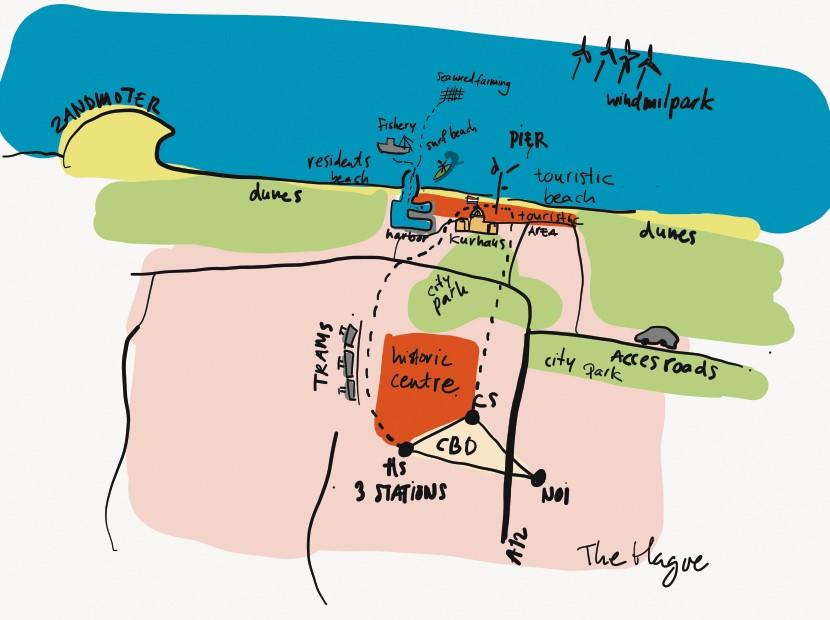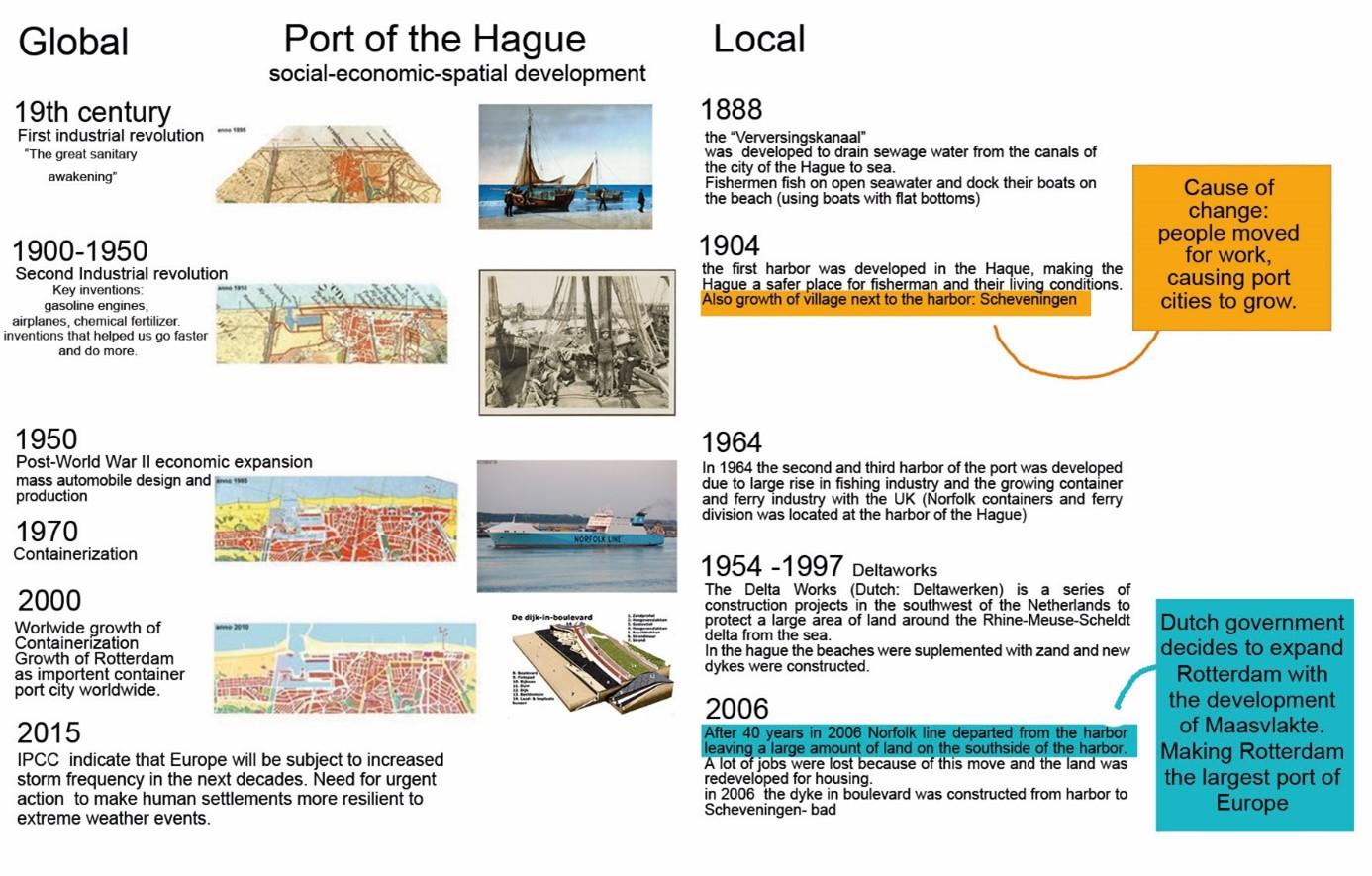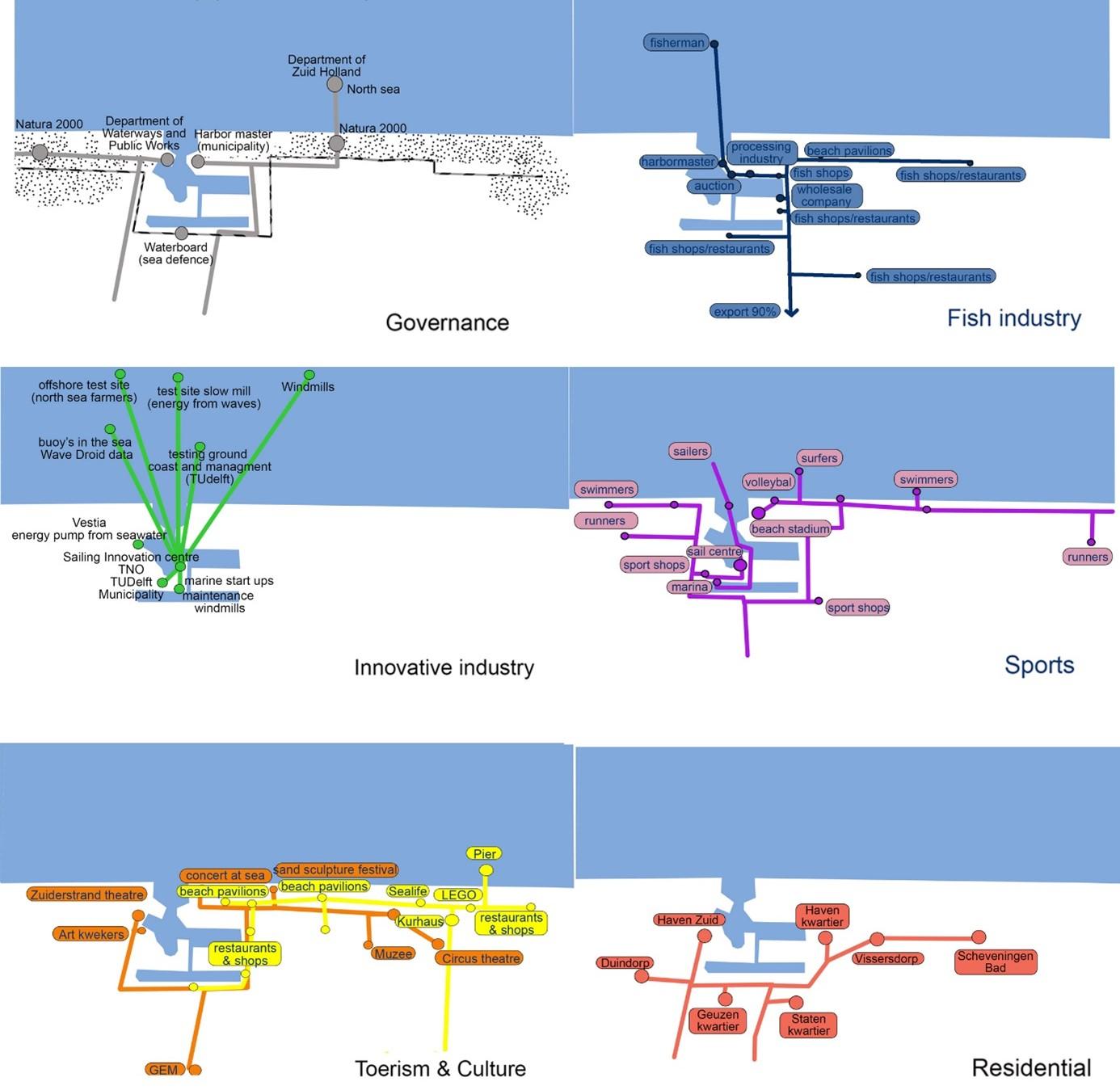Demet Voûte
In the free online course (Re)Imagining Port Cities: Understanding Space, Society and Culture, learners make a portfolio addressing the spaces, stakeholders, transitions, values, and challenges of a port city territory they choose. We challenged the learners to reflect on their learning in a portfolio and invited them to present their findings in a blog. Over the coming months, we will be posting some of the results. Learner Demet Voute discusses how historical themes could play a role in addressing the challenges The Hague faces today when planning for a sustainable and socially just future.

Because of the diverse economic and social benefits from their proximity to the sea, coastal cities continue to experience rapid urbanization and population growth worldwide. The Hague is the largest seaside city in the Netherlands. Together with the port city of Rotterdam it forms the Rotterdam–The Hague Metropolitan Area (MRDH). With 2,6 million inhabitants in 2020, it is expected to grow with another 400.000 inhabitants until 2030. This growth will require nearly 170.000 extra housing units. It will also influence the accessibility of the city, and the increasing demand for jobs, working locations and facilities. Already, free space within cities is scarce, the accessibility is challenged and there is a demand for a more sustainable economy because of climate changes.[1] The future spatial challenge for The Hague is the rapid urbanization and its additional competitive spatial requirements (housing, jobs, accessibility, green space). Being a coastal city, The Hague has to be prepared for the effects of sea level rise and the required use of space for the counter measures (dykes, dunes) all within the boundaries of the city. Meanwhile, it still aspires to be a healthy, prosperous, and sustainable coastal city for its growing population. This article looks back to The Hague’s historical transitions to analyze main challenges and propose solutions for its future.

The port of the Hague has historically been a port for the fishing industry. The fishermen’s village of Scheveningen, precursor of the Hague’s contemporary port, was originally founded in the 12th century behind the dunes on low land, sheltered from sea and wind. The fishermen had a love-hate relationship with the sea. It brought them fish and prosperity, but it also took many lives. To date, almost every fisherman's family lost a relative to the sea. Safety and prosperity have therefore always been in conflict with one another.
The accessibility of the coastal zone was also important--even in the Middle Ages when the city of The Hague was founded about five kilometers inland, on higher grounds. City and port were connected by a straight road, called the Scheveningse Weg, while a system of canals was developed to transport fish over water. Wealth and industry made the city grow towards the port. With this growing city and residential areas, the roads were not only being used for industrial transport anymore. As large trucks needed to commute to and from the port, the roads became unsafe for the residents, and the port less accessible for industry.
The function and identity of the port of The Hague drastically changed when the Norfolk Transport Company left the port in the beginning of the 21th century, leaving a large area vacant for many years. To solve the housing crisis in the ever-expanding city, the municipality of The Hague sold the vacant land at the south-side of the port to developers to build 700 houses from social to high end, but also buildings for retail and hotels, mixed with marine activity.
Because of the strong ties to the sea, people living and working near the port have a strong physical and mental connection to the North Sea and its ecosystem. This connection can be found in culinary love for fish and seaweed from the sea, in passionate sports and recreation on the waves and beaches. The beautiful skies and sunsets have been the setting for many famous paintings. A wide horizon and the access to the sea are among the common values the stakeholders of the port share. Every citizen of the Hague has his own favorite spot at the coastal zone, and the beach has always been the most inclusive location of the city. A multiplicity of stakeholders in the port of The Hague - the fishing industry, the municipality, the Water Board, residents, Ministry of Infrastructure, tourists, restaurants- and retail owners - share the public space in the coastal area, which leads to various tensions and challenges.

Currently, the three main themes in the history of The Hague - safety, prosperity and accessibility - are threatened. Besides the effects of sea level rise that involve the whole city and region, each stakeholder has their own challenges. The fishing industry wants to grow, but because of housing around its borders there is literally no space left to develop, therefore limiting future prosperity. The municipality is facing a housing and mobility challenge; every year more people move to The Hague. The municipality’s strategy is to densify housing at public transport hubs. To create a healthy city, these hubs have to be connected to jobs, recreation and ‘green’ areas. Fast public transport connection from such hubs in the city to the port (for innovative and industrial labor) and the coastal zone (for recreation) is key. Meanwhile, the residents want to keep living at the port and coastal zone safely. They reject big developments, high dykes, or large industrial sites so they can keep an open horizon, accessible to the public. It shows that an externality like sea level rise poses several internal value conflicts: while all the stakeholders want the coastal zone to survive, they have their own values and interests standing in the way of an integrated solution.
Changing the perspective of the sea not being the end of the city but the entrance of the Hague can help reconnect the port with the city. Safety should have the highest priority, being the biggest challenge of the port and the whole coastal zone. Studying which water safety measure could integrate some of the city’s challenges could help reconnect sea and city. A soft sea barrier with dunes, for example, might help add more green public space to the city that keeps densifying.
The same goes for the value of prosperity: the challenge is to identify how the new economy can flourish from the proximity of the sea and how this can be combined with the local marine businesses and fish industry. Sea farming or new ways to produce energy from water and tides could be an example of this. Increasing accessibility in the context of continued urbanization requires a system change in the mobility of the Hague. Here, the goal should be to develop quick public transport (preferably by rail instead of road) connecting the city to the coast in a sustainable way. Such a transformation requires investments, that could be generated by creating a good business climate and attracting new marine-related businesses to settle at the coast. Additionally, a new soft sea barrier means redesigning the contour of the port towards the sea, creating possibilities for the fish industry to grow outward, rather than inwards, and opening up the inner port for these innovative businesses.
The history of The Hague shows how three themes have played a large role in its development: water safety, prosperity, and accessibility. Many questions are still open though as we need to find ways to deal with the challenge of sea level rise. The City of The Hague is currently facing an important challenge and opportunity to rethink, redesign and even reclaim the seafront area making the port safe, prosperous, and accessible again to benefit the city and the region. Such plans can also reconnect the port physically and socio-culturally with the city again. Future successes lie in the process of bringing together all the stakeholders and to highlight the common value of water safety, thereby allowing every stakeholder to overcome the individual challenges they may have.
Acknowledgement
The free online course (Re)Imagining Port Cities: Understanding Space, Society and Culture, runs on the EdX platform. The blog was reviewed and edited by Carola Hein and Hilde Sennema.
References
Strategische Agenda MRDH, 2022
